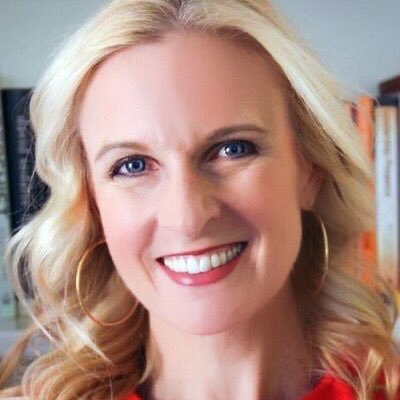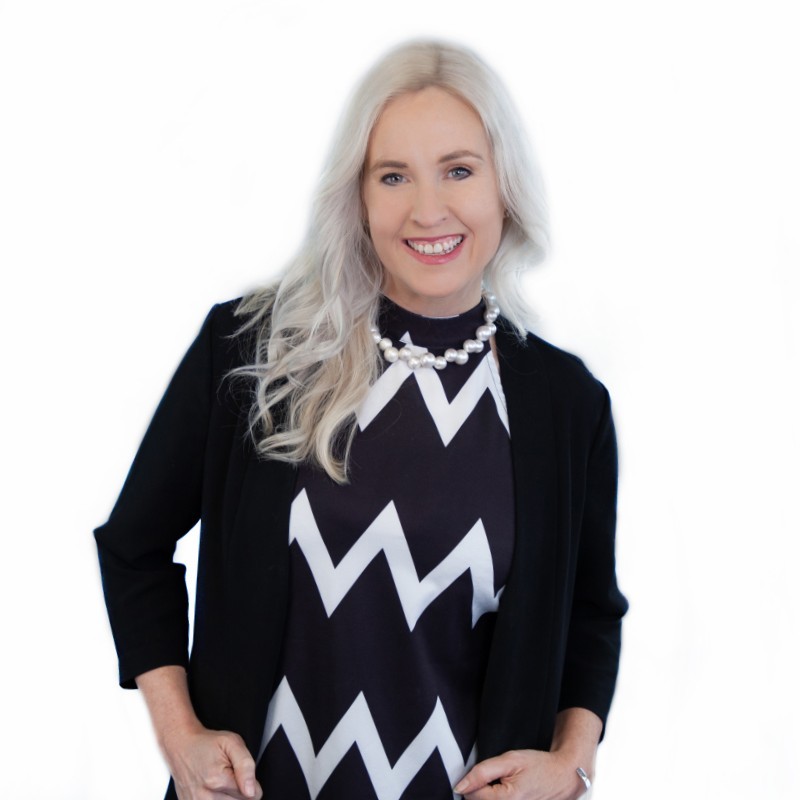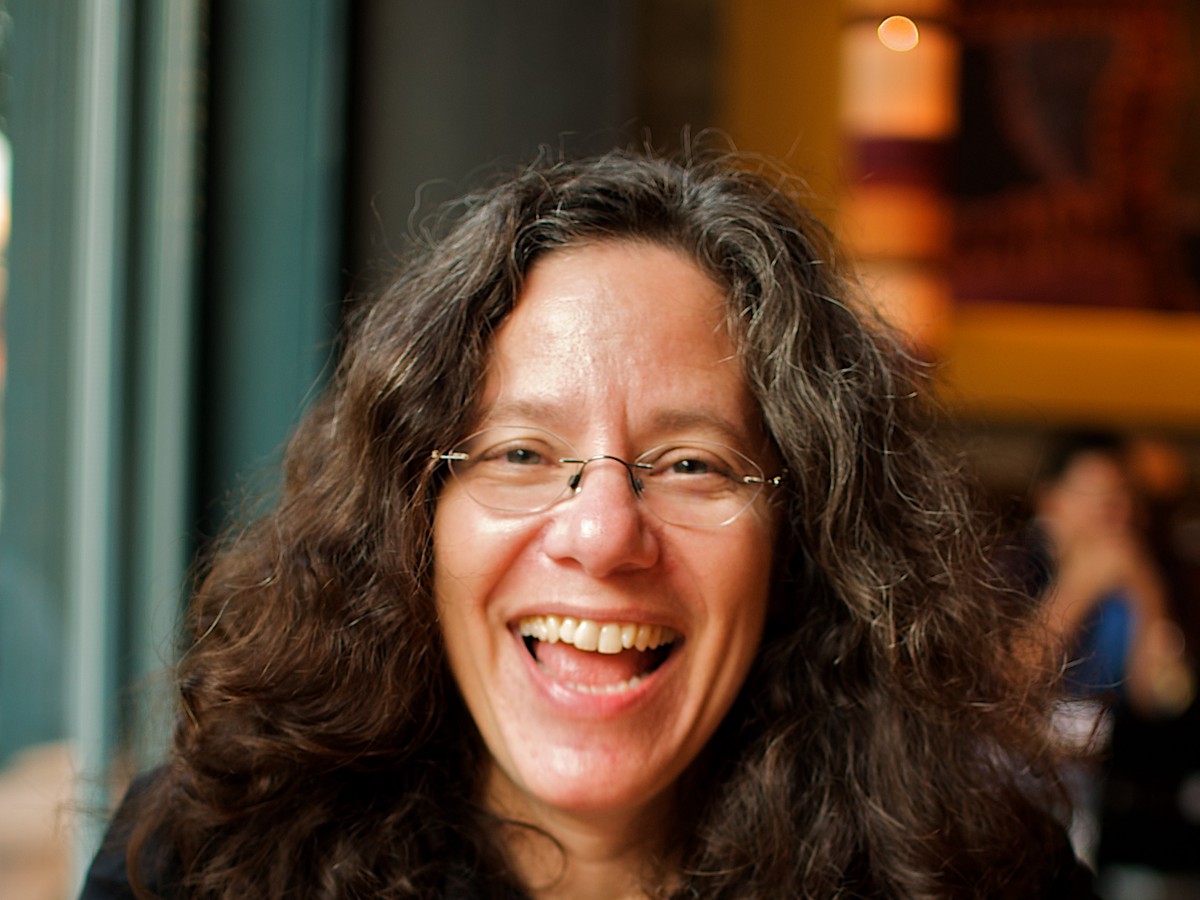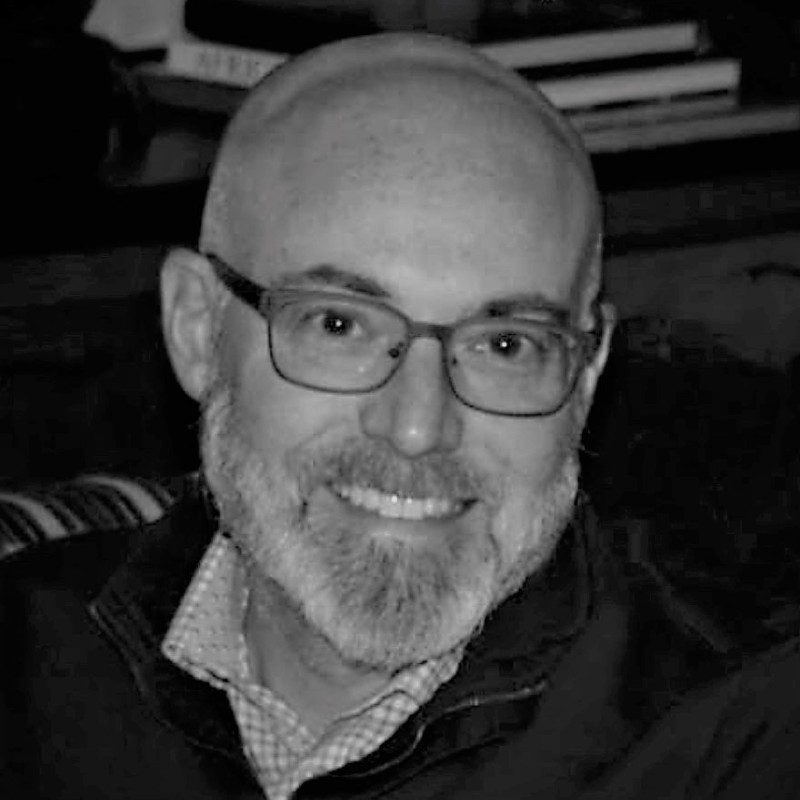
Today, our guest is Jennifer Brown. She’s the president and CEO of Jennifer Brown Consulting, author of the book “Inclusion: Diversity, the New Workplace, the Will to Change,” host of the podcast “The Will to Change,” and a keynote speaker around the world. This episode is Work Minus Bias. Hi, Jennifer. How are you?
Hi, Neil. I’m excited to be here. Thanks for inviting me.
It’s amazing to have you on the show. You’ve done so much for the work of diversity and inclusion and a lot of things that are around you. Your thesis around diversity and inclusion is about how we all carry these stigmas and we all carry these privileges. So, can you go into a little bit more detail about how you came to that conclusion?
Sure. Well, it’s become a passion in addition to what I get to work on every day. I am a member of the Lesbian Gay Bisexual Transgender community. We all use LGBT just to shorten it. And I’ve been out since I was 22 and I’m in my 40s, but happy to be in my 40s. I’m not going to say bad things about that. But still, having been a member of a community that is traditionally marginalized and kind of navigating that, finding my voice in that context, and having to learn about quickly people’s bias against a whole host of identities of which I possess several that traditionally face more bias. And not just LGBT, but being a woman in business, of course, and a woman entrepreneur, and a woman running a business of my size puts me somewhere in that 5% of business owners. And that’s changing but it hasn’t always been thus.
So, I think that that wrestling with those identities as I was trying to build my career, find my voice, find where I fit, was just so present for me. And I never really had the words to describe it but it was happening to me. It was happening to many people around me. And I’ve always also thought I would be in nonprofit work for my whole life when I was younger and I’ve always felt very called to use my voice for change and as sort of an equalizer if I can. I almost would describe myself as an activist, but interestingly, I do corporate work now mainly. And that word is not one I use in those circles because people can’t handle it.
But it’s okay because I’m also very grounded in the discipline of something called change management and organizational development which I have a master’s degree in. And a lot of acculturating the concepts of diversity and inclusion in organizations is about really good change management because you’re dealing with resistance. You’re identifying stakeholders. You’re assessing organizational readiness and willingness to change. And good news and bad news, there’s no organization out there that doesn’t need to change. It’s just a matter of degree and appetite and the pressure that maybe some are feeling to get on the diversity and inclusion train whereas maybe they used to really not talk about it or maybe they talked about it but weren’t really doing anything about it.
So, there’s a lot of opportunity to be having this conversation for any organization of any size and that’s what my consulting company does is we actually enter at whatever point on the journey our clients are and help. So, help either craft the approach or accelerate the approach that already exists or bring some best practices and ideas for companies about how they can prioritize. Having a diverse workforce, what does that mean? How do they recruit and retain talent? And inclusion speaks to really the environment of the workplace. So, once that talent is present, how do they feel in the workplace environment every day in terms of their ability to contribute? And those are two simple definitions.
You can also think of diversity and inclusion as diversity being asked to the dance, and inclusion as being asked to dance. So, diversity is bringing people to the table, making sure they are around the table, but that’s not enough. Inclusiveness is really how to use that and engage and how do you enable those contributions to be made. And then we can go even a step further. In my field, we’re starting to talk a lot about belonging which is a feeling, so not only asked to dance, but perhaps asked to plan the whole event, expected to bring your best dance moves. It’s that feeling of belonging that all of us really I think want deep down. We want to care about what we do. We want to feel purpose in our workplaces. And we want to belong on a deep level. And I think that if we can get underneath all of that, we will have better outcomes.
So, I have a ton of questions for you. First, you talk about this balance between feeling the stigma of some of your roles but then also recognizing that you are in a place of privilege. How do you balance that and how do you help others to see that within themselves, too?
When I hit on this, it was like a big unlock for me because I’m a white diversity practitioner. Sometimes I walk on the stage and people say, “What is she doing? What’s her skin in the game?” And I struggled with that and I think a lot of people that look like me might not know where they fit and not know how to contribute.
And so, I thought about this concept of intersectionality which is coined by Kimberle Crenshaw who’s a professor. Originally, she talked about it as multiple stigmatized identities and how they all need to be considered together. So, an easy way to think about this is white women’s experience and women of color’s experience. They’re both having a woman’s experience, but one group is additionally having the experience of being black, for example. And some days that might be a sort of primary experience, when they walk in the room, people notice their ethnicity first and then they deal with all the microaggressions or bias conscious and not coming at you based on that. So, as we walk through the world, there are visible things about us and there are visible things. And some of us can hide some of our diversity dimensions. We might have a disability. We might have a struggle with mental health. We might hide our ethnicity or our race if we can “pass as white.” And certainly LGBT people are the pros at passing.
So, what I do is I try to relate this to intersectionality in myself and I say I am intersectional. We all are. Most of us have levels of privilege. For me, my privilege might come from my socioeconomic background, which you can’t see when you meet me. But I have two master’s degree. I’ve never wanted for anything honestly. And so, while I’m in a very marginalized group in terms of being LGBT, there’s these other areas of privilege that offset that tremendously. So, every LGBT person, their intersectionality impacts how much each of those identities is really felt in a negative way when it comes to bias.
So, I’ve been very fortunate I think but I but I try to just talk about this blend of stigmatized identities and myself and where I struggle to be heard and struggle to see role models that share my story that look like me. But I also have a voice because of my more mainstream or majority identities, if you will, where I can use my voice for others. So, as an LGBT woman, I can do more for people of color who also identify as LGBT. I could do more for trans and gender nonconforming colleagues and friends and loved ones because I might be coming from a cisgender place. Cisgender means my sense of my gender matches the body that I was born in. So, I can have a conversation with others to educate them and remove the burden of having to do that all the time from people who are transgender. It’s something that I can show my allyship in.
So, I challenge audiences. I tell my story in that way and then I challenge them to say you have levels of privilege. You are dealing with your own intersectionality. What is that and then how are you using the privileges that you do have to get in that room to have a conversation to lighten the burden or the low that’s being experienced by somebody else who can’t have a voice or who will struggle to be heard and be given a fair shot.
You used the term called allyship. Unpack that for us.
Ally ship came out of the LGBT community. I mean, not originally, but in my own personal experience. Originally, certainly there’s always been been allies to marginalized groups. Civil rights is a great example. White allies jumping in to the fight, marching, etc. In the LGBT community, straight allies really took us to the point where we could achieve things like marriage equality. We just needed the critical mass and we needed that, not only acceptance by the straight world, but the sponsorship and support and the active championing of the straight world in order to achieve. So, ally ship in the workplace context has been, for example, in diversity groups or networks, the gay network would have straight allies that would come, go to the meetings, march in Pride, sponsor the group, just be visible and make it safe for people to come out at the organization. In some of my clients, the straight allies out number by a long shot the number of out LGBT people in the company that are involved. It’s really interesting.
But this concept of ally ship goes beyond “I’m a straight person and I want to show my LGBTQ colleagues that I support them.” We need more male allies for women. We need more white identified allies that are aware of whiteness and dynamics of racial justice and who are showing up to be a voice amongst their colleagues and families as a white person who’s examining their own participation unwitting often in systemic problems we have with racism in our country, in our companies, etc.
So,ally ship means that you are questioning. You’re learning. You’ve undertaken this journey to not just sort of passively say I’m an ally, meaning, “Oh, sure. I’ll support that. Ask me to write a check.” I think true ally ship is very proactive. It’s activated. It’s brave. It’s at the higher levels. It’s uncompromising. It’s bold. It’s sort of shoot first, ask questions later, challenging power, not being afraid to use your voice, and doing everything you can. And I think those of us who consider ourselves allies, remember the important thing is you’re really not an ally until someone in a marginalized group identifies you as such and kind of thanks you for being that. I would use that always as my benchmark. Doesn’t mean I can’t say I desire to be an ally to this community. That’s a language I try to say. Because I know that it’s a journey for me, too. There’s a lot more I could be doing. I do this work full time.
You talked about recruiting and retaining versus inclusion and the difference between those two. Do you find that for companies who are trying to be active in one of these, it’s kind of a snowball effect where once they get the recruiting issue down that inclusion comes naturally or is it still another big massive step for them?
Oh, my gosh. It’s more the latter. In fact, recruiting is not easy for diverse talent in particular depending on if you’re in the Midwest or in certain areas of the world. Diversity means different things all around the world, too. But just in that U.S. paradigm, you can do a good job of recruiting talent and kind of creating that mix that I was talking about sort of inviting to the table. But the retention piece is more complicated because you’ve got this talent entering systems that really haven’t changed in many cases since time and memory. They’re still very hierarchical.
If you’re a person who’s not in the majority, for example, coming into a workplace, the low levels of the company, actually, you might be in a majority. You might be a woman of color and you might look around and see, say if you’re a customer service professional, you’ll see a lot of diversity in the bottom half of organizations. And you’ll see within the first year or two of having been hired, people will stick around, of course. They’re still finding their way. But the problem really happens when the pipeline starts to move upwards.
Choices are being made about who gets considered for promotion, who is seen as a leader, which is potentially full of bias because we haven’t seen leaders that look a certain way, we then replicate this image of what a leader looks like. We make “safe decisions” in our lens, “safe” meaning, “Oh, they went to a school I know or they went to the school I went to or we know their family or they’ve done this role before so they’re going to be able to do it here.” And unfortunately, it’s subtle. Sometimes it’s not so subtle. But the subtle biases that happen in performance reviews. Gendered language in terms of how women are given feedback on their performance. It’s the likeability research around women being strong and assertive is viewed as having sharp elbows and men exhibiting exactly the same behaviors are viewed as high potential and that is still very real, very, very real and well documented.
So, there’s a lot headwinds facing talent that’s trying to move up but the organization and decision makers within the middle management and then senior leadership, there has to be a very intentional pull up that is focused on talent that typically is not considered when these important sort of critical milestone decisions are made. And so, when you see people being passed over or you see more of the same kind of person being hired over and over and you look upwards and you see a leadership team that looks a certain way and it looks nothing like you. And when you do see people that look like you, they’re sort of downplaying their diversity. They’re not really out about it or they just don’t make a big thing about it.
And there’s a lot of leaders who don’t want to be that person. They don’t want to alert or remind people that they’re the senior most Latina executive at the company. That’s actually not comfortable for a lot of people and that’s valid. I mean, not everybody wants to be the spokesperson for an entire group of people. But it’s also really exhausting to be the only one and always have all eyes turn to you and say, “Well, what do you think as the senior Latina person here.” It’s tiring. It’s exhausting. It’s tokenizing and you’re always kind of left wondering, “Why aren’t there more people that look like me here? What is the bias that’s being allowed to kind of run rampant and not being corrected in this company?”
And then you start to look elsewhere and you see other people leaving and you follow suit because I think what people don’t understand is talent watches what everybody else is doing, and especially are watching who’s getting promoted, whose stories are being told, whose success is being celebrated, how is the composition changing? Because that’s the evidence that work is being done on the culture and on retention. I think, actually, representation, when you look around, that’s a lagging indicator. The leading indicator is working on an inclusive culture where all kinds of talent feel they can really thrive and where they’re choosing to stay because they believe they’re getting a fair shot.
Then, when you invest in that, that diverse talent will stay. They will grow. They will move into leadership roles. They will be seen by others that look like them. It will be an encouragement that they have succeeded in the way they have. And it will beget more diversity coming into the pipeline in the first place. It makes recruiting easier when different diverse talent can see in marketing materials, etc., they see this company is committed to this and they’re walking the talk and here’s what their leadership team looks like.
But unfortunately, that’s really not the majority of the cases that I see. I think, sadly, and this is why we’re so busy, a lot of this just isn’t really on people’s radar screens and we really have to teach that this is happening and then help organizations construct a way to get after it.
You’ve been in this world for a long time. You’re talking 20 years. You’ve seen a lot of changes. Hopefully, some good changes that have come about. As you look at different generations that are coming up, are you more encouraged by younger people entering, not only at the beginning of their careers but younger people entering into leadership positions as well, do you feel encouraged by that and do you have any hesitations about where we’re headed?
I am encouraged. I have a lot of hope and expectations of the millennial generation to bring their values and to stand by their values in their companies because they are now the majority in the workplace. And by the way, just for the audience, millennials now, believe it or not, millennials are now reaching the age of 40. So, generation Z is coming up behind them. Oldest generation Zs are about 22, 23 right now. So, millennials are the majority demographic generation in the workplace as of, like, this year, or last year, it crossed that line depends what you read. So, with that, they are the most inclusive generation. They have an expectation of inclusive environments at that work as table stakes. And they are infusing their increasing number of leadership roles with that as kind of the price of entry.
I think they’re still, though, dealing with a ton of us Gen X’ers and baby boomers who are lingering, who are hanging in, who are staying in the workplace longer, and some of us who don’t understand diversity in all its dimensions and embrace it to the extent that that younger generation does. So, there’s still a lot of stakeholders to be managed and it’s not just as easy as saying, “Well, they’re the majority now in the workplace and all of our problems with diversity are going to be solved.” And in fact, there is some disturbing research that you look at millennials and it’s not smooth sailing. I think there’s still perception gaps between millennial men and millennial women around the difficulty of being a woman in business where men might say it’s easier than women when they’re asked the same exact questions.
So, there’s some really interesting research on millennial men. I think it’s from Boston Consulting Group. It’s a really fascinating article but it’s important to not assume that the presence of a generation that happens to be the most diverse and inclusive of any generation we’ve seen is going to fix our organization. There’s no replacement for really hard work and there’s still a lot of bias running around because it’s been institutionalized and it’s never been looked at and corrected with proactive and consistent action by organizational architects and leaders. So, I think it still doesn’t excuse us from the work.
But yes, I think it’s really cool. It’s also really interesting. I want to point out that millennials are redefining diversity in much broader ways. So, it’s not the binary that a lot of us grew up with which is black and white in terms of race, or Hispanic, or you’re one thing or the other, or you’re gay or you’re straight, you’re trans or you’re not. They are walking the middle and there’s so many things. They are so intersectional and they’re so capable of describing all of those parts of who they are and really wanting to honor all of who they are in what they do every day. That’s a great commitment. It’s something we should listen to. It’s something that would benefit all of us to really value all of our diversities. And to have a bigger more inclusive conversation about diversity beyond race and gender I think is so critical and I think will welcome a lot of us into that conversation who may not struggle with our race per se because of our race or because of our gender but are equally struggling with caregiving. We’re going through illness and mental health issues or addiction issues in our family. I mean, there’s a lot going on for workers and I think we need to have a more holistic conversation about all of these things and acknowledge what’s going on for people in workplaces today. It’s really just a great time to see whole people and we’ve got to do that as employers in order to thrive.
You have a new book coming out later this fall. I want you to talk about that because it’s about being an inclusive leader. Give us some tips and some insight about, if you’re coming in a position where you do have some power and you recognize that and you want to use it for good, what are some the key strategies you can use?
The book is out in August of 2019. It is fundamentally structured as a journey with four stages. First stage is unaware. Another way to think of that stage sometimes is apathetic, meaning I know there’s a problem or I’ve read something but I don’t really care and I’m not really paying attention or just could be literally sheer unawareness. And a lot of people are there, a lot of people. I think diversity has been kind of farmed out to diverse people with underrepresented identities to do the work of fixing organizations.
“Tell us how to fix this.”
So, if we can get to aware, meaning we can wake people up out of whatever it is, apathy, resistance, lack of awareness that there’s a problem, then awareness is stage two and then we have a ton of ideas for what you need to learn. Once you’re aware and you realize there’s a problem, how do you go deeper into that problem? How do you become competent about different headwinds that different communities of your coworkers are facing and experiencing every day. And all this, of course, is leading to being a better ally. And then from awareness, the next stage is activation. So, what are you going to do with that knowledge that you gained and awareness? How are you going to activate and use your voice? And that’s a big step because now it’s sort of going public. “Hey, I want to make a change and I’m not going to just do the private work. I’m going to actually start to take visible action and get feedback on that and use my voice for change and I’m going to mess up and I’m going to need coaching and feedback and sometimes forgiveness for making a well intentioned action that ultimately backfired.”
There’s a lot of learning in activation because it’s a muscle. It’s trial and error. You have to practice it to get comfortable. And finally, the last stage in the book is advocacy which is what I would call true ally ship, meaning, like we talked about earlier, you’re brave. You’re bold. You don’t care. But at the same time, you’re smart about how you create change. You line things up appropriately. You know how to deal with resistance. You’ve done the work so you have that awareness. You’ve activated. You found your voice. You figured out what tools you need.
So, each chapter is structured along that way and has a lot of ideas and reading and footnotes and things to consider. I hope that it encourages more people to say, “Hey, this is, not just my issue, too, but my opportunity to be a better leader.” And it’s not like taking your medicine. It’s not something that’s unpleasant. It actually enhances your ability to lead in any generation from any place in the organization. Your colleagues are expecting it of you. And if you look at diversity and you sort of keep it at arm’s length and you say it doesn’t apply to you, you’re actually at risk as a leader of falling behind, not resonating with your team, your colleagues, not being inclusive and getting the most performance out of others, and not being really a desirable person to collaborate with and to work with.
So, to me, this is critical. It’s a business book but it’s applicable outside of “business,” too, but it’s in any sort of context, whether it’s a church board, community organizations, so not just the workplace. Even with your kids, when you want to be an inclusive parent, how do you go along this journey of being an inclusive parent? You can actually apply the steps to understanding your kid who thinks they might be gender nonconforming and they just shared that with you. A lot of parents are reaching me and saying, “I’ve been told this by my kid. What do I do now?” So, anyway, maybe “How to be an Inclusive Parent,” is next.
That’s the next book going. Great. Well, Jennifer, it’s been great to talk to you. We have so many other questions we could cover. But where should people go to stay in touch with you?
Thank you for asking. So, my company consulting, if you’re in an organization and you suspect you need some consulting assistance, we’re at jenniferbrownconsulting.com. And my speaking and authoring and my podcast transcripts are on jenniferbrownspeaks.com. There are some videos of my talks there as well. And my podcast is called “The Will to Change.” It’s on iTunes, Stitcher, wherever you consume your podcast content. We’re on our third year. We have 50 episodes, true stories of diversity and inclusion. And I’m in all social channels. I’m heavy on Twitter which is @jenniferbrown. I’m on Instagram @jenniferbrownspeaks and I’m in Linkedin and Facebook, Jennifer Brown Consulting. Thank you for having me today.
It’s been great to have you. I’ve learned a lot about this topic and I’m glad you’re in the position you are and leading us to learn more.
Well, thanks for being an ally, Neil.












